What material can you make?
For a high-quality and durable result, you should choose raw materials that can withstand seasonal fluctuations in humidity and temperatures. Also, the coating must be resistant to fungus. There are many ways to make garden paths with your own hands or with the assistance of specialists.
Concrete
A budget-friendly, durable and in-demand material that will last for several years. You can independently make a track of any shape from a sand-concrete mixture. Concrete is almost impervious to moisture, resistant to low temperatures, but when the ground moves, the slabs can crack. The solution is suitable for decoration: you can add colors, pebbles, mosaics or use any other suitable design. Plates with lawn grass sprouted between them look no less impressive.
A walkway made of concrete slabs is a capital structure, it is difficult to move or dismantle it. Before you arrange a path, you need to plan both its direction and its surroundings. You should not strive for perfectly evenly laid squares and rectangles - different orientation and size of the plates will add originality and dynamics to the landscape.
The photo shows a do-it-yourself concrete garden path using curly shapes. A detailed master class on creating such a design is at the end of the article.
A rock
Natural stone is a traditional design option for a summer cottage. It is the most durable and wear-resistant material. It has high heat resistance, does not change in the off-season and has a relief surface, so it does not slip. Easy to fit, with a small gap and in any direction.
Stone is considered the most expensive type of raw material, but the high price pays off due to its durability.
Natural stone can be called elite, since in addition to its high cost, it is distinguished by the uniqueness of the pattern.
Paving slabs
In terms of strength, it is almost not inferior to stone, it is environmentally friendly, since it is made of concrete or ceramics. The tiles are available in the form of squares, hexagons, rhombuses and coils, and come in a variety of shades and sizes. With its help, you can create any composition that will successfully fit into the design of the garden plot. Moisture-resistant, durable, easy to install and, if necessary, can be easily repaired by replacing the damaged part.
Paving slabs cannot be called a budget option; moreover, due to the peculiarities of laying, a large amount of material is required. Before facing, the sod is removed to a depth of 15 cm and the earth is carefully rammed. On the sides of the track, curbs are required. The base should be composed of sand and gravel.
Areas with high traffic are best laid out with paving stones. It is several times thicker than tiles. Different patterns can be made from paving stones and colors can be alternated, forming a unique pattern.
Clinker brick
Sometimes on the plots you can see paths made of brick, but this is not the material that is used for construction.It is made from a special clay that is fired at a high temperature. The homeland of clinker bricks is Holland, where they have paved their roads for a long time. Absolutely non-porous material does not absorb water, does not deteriorate from frost, is environmentally friendly and lasts an incredibly long time. When mixing several types of clay, manufacturers achieve a variety of colors, so a brick path does not have to be red.
The photo shows an example of a clinker brick path laid with straight paving, and a round area for the future patio.
Decking
Also called garden parquet. It consists of tiles or individual planks of hardwood, impregnated with wear-resistant compounds that make it more durable. It can be laid straight or with bends on a concrete or sand and gravel base, but especially valuable wood should be dismantled for the winter.
There is a decking made of plastic planks that imitate the wood pattern and color. They are connected with each other using fasteners, so the installation can be done independently. Plastic does not require special care, does not grow moldy or deformed.
In the photo, the flooring is made of wood-polymer composites obtained by mixing wood with monomers, which provide the boards with stability and mechanical strength.
Plastic
Colored plastic tracks have become popular due to their low cost and ease of installation. They are sold in modules or rolls, are easy to dismantle for the winter, protect against weed germination and are not afraid of moisture. Despite all the advantages, plastic is short-lived, and some products fade quickly.
Gravel or crushed stone
To make your garden paths look natural, you can use small pebbles, gravel or rubble, which do not require much effort during installation. Before the formation of paths, you should prepare the base, apply herbicide or put a film. The gravel will not move if you border the path with a decorative border. Such a structure will not withstand heavy loads, so you should not lay rubble in the parking lot.
Stones for paths may differ in shape, color, texture. Light gravel is ideal for a Japanese-style garden.
Wood
Garden paths made of wood look harmonious, as they are created from natural materials. The boards can be used as an independent decor, as well as in combination with pebbles or tiles. You can make a wooden path with your own hands, but before installation, you should treat all the elements with antifungal compounds, and then cover them with varnish or persistent paint.
With a high budget, a thermal tree is suitable for creating a garden path in the country: such wood is very dense in structure, since all moisture evaporates from it during the heat treatment. There is only one drawback of such coverage - high cost.
Improvised means
The owners of summer cottages often create paths from baked brick or its fragments, and also combine several types, adding clinker and construction. Solid bricks can crumble, but in some garden areas this design looks quite harmonious.
A budget option for paths is linoleum, but such a coating does not differ in durability and beauty. It must be laid on a carefully tamped base. Unfortunately, linoleum slips a lot after rain.
The owners of garden plots do not limit themselves in imagination and form paths from cast iron, broken ceramic tiles, pallets and even tires. On the one hand, not all of these methods are durable, but on the other hand, they help to show imagination and reuse things. Another popular solution is wood cuts treated with linseed oil. Their thickness is about 80 cm.
Combined tracks from different materials
If you are not afraid to experiment and combine raw materials that are excellent in color and texture, you can get a complex and harmonious design of paths on your garden plot. Successful combinations:
- Concrete slabs and gravel.
- Slabs or stone plus sawdust.
- Wooden boards and pebbles.
- Wood cuts and gravel.
The photo shows a combined path formed from saw cuts and white gravel.
How to make it yourself from curly shapes?
The main advantage of creating garden paths with your own hands is its cheapness. Preparing a solution and pouring it into molds will be cheaper than ordering ready-made plates. In addition, you will be able to save on delivery.
Tools and materials
To create tracks from forms you will need:
- Cord.
- The shovel is ordinary and shovel.
- Cement.
- Sand.
- Water.
- Gravel.
- Solution container.
- Special shape made of plastic.
- Machine oil.
- Master OK.
Step-by-step instruction
Getting started:
- The future structure must pass either along a path or on carefully compacted earth. Mark the borders with a cord and remove the sod layer.
- Then we fill the trench with gravel and sand, carefully ram it.
- Mix sand and cement in a ratio of 3 to 1. Add water to get a solution of sour cream consistency. You can mix with a shovel, but for a more convenient process, it is better to use a drill with a special nozzle.
- The mold must be lubricated by applying oil to a toothbrush. It is important that the entire inner surface is smeared - edges and corners.
- We lay the form, press down and fill in the solution. We push it with a trowel, getting rid of voids. Add the mixture if necessary.
- After about 40 minutes, carefully remove the form.
- Thus, we form a path of the required length. After drying, fill the joints with sand.
- The garden path has been completed.
Video tutorial
For a detailed master class, see this video:
Budget ideas for giving
When arranging a site in landscape design, rubber tiles are often used - such material for garden paths is made by recycling tires. The tile does not decompose for a long time, is resistant to mechanical stress and is not susceptible to fungus.
Instead of plastic molds, you can use natural burdock leaves for a beautiful concrete garden path. With their help, original slabs with picturesque prints are obtained.
Applications can also be found in the collection of glass bottles, which are dug in with the bottom up using a building or sand-stone mixture.
The photo shows a simple garden path made of rubber tiles, laid in a depression and framed by a lawn.
Photo gallery
In fact, there are many more paving options - the choice depends on the style of the garden, the exterior of the house, and also the budget. It's up to you to decide what the garden path will be created from, and look for interesting ideas in our gallery.

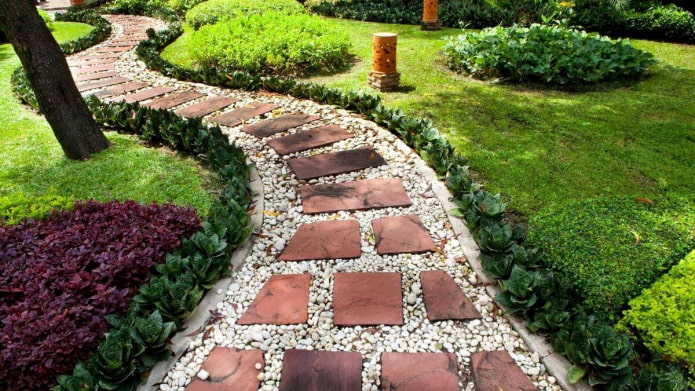
 10 practical tips for arranging a small kitchen in the country
10 practical tips for arranging a small kitchen in the country
 12 simple ideas for a small garden that will make it visually spacious
12 simple ideas for a small garden that will make it visually spacious
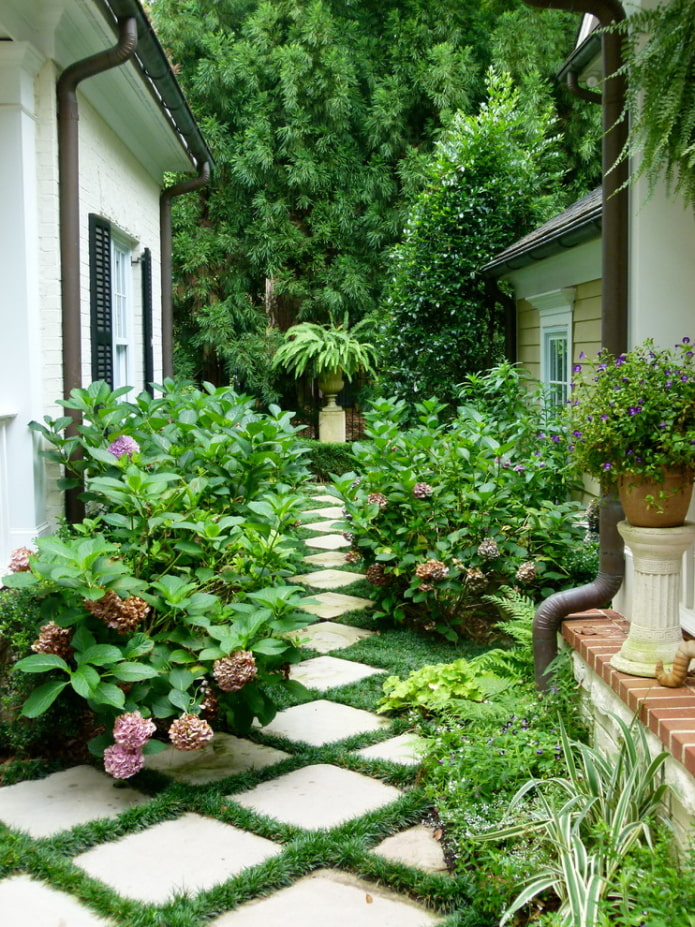
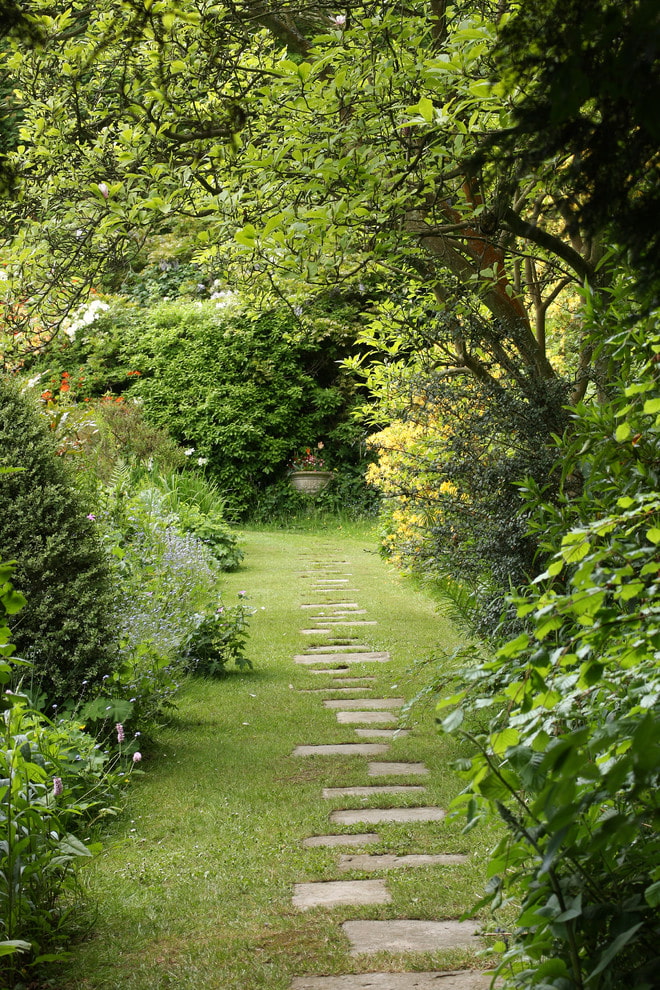
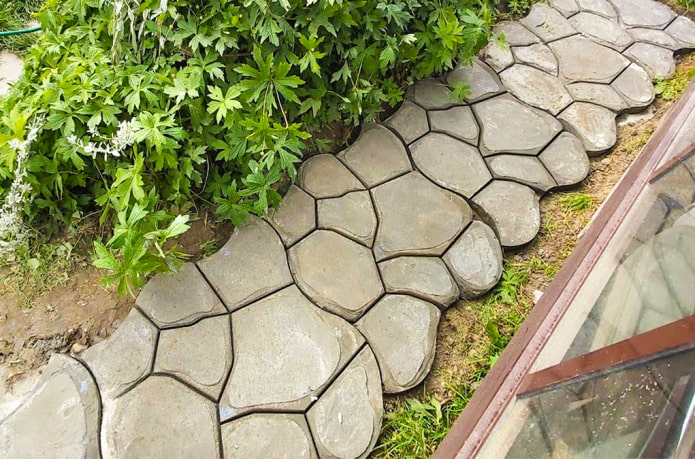
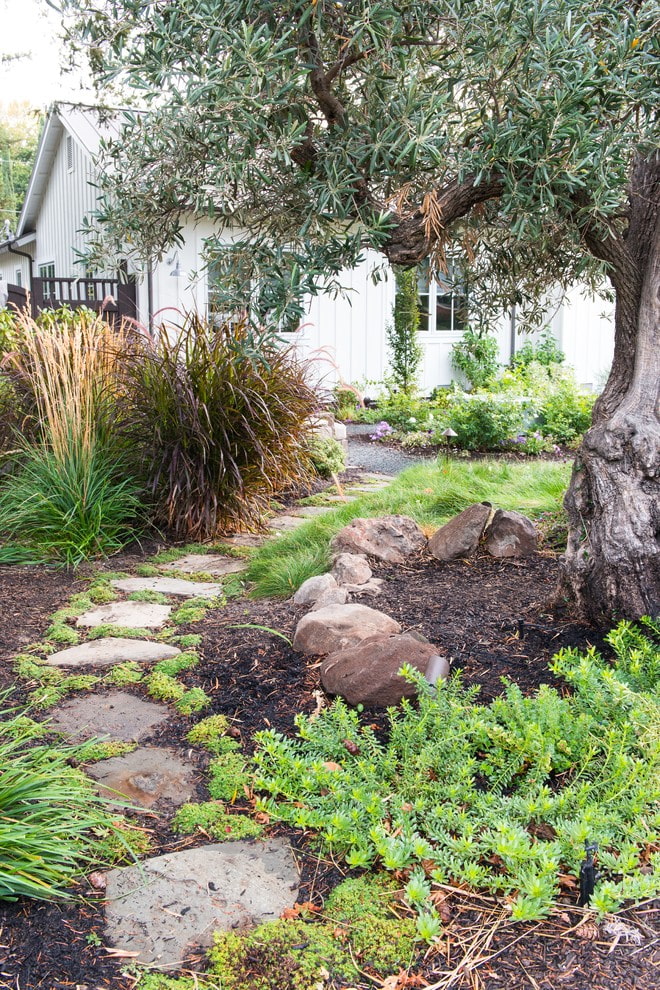


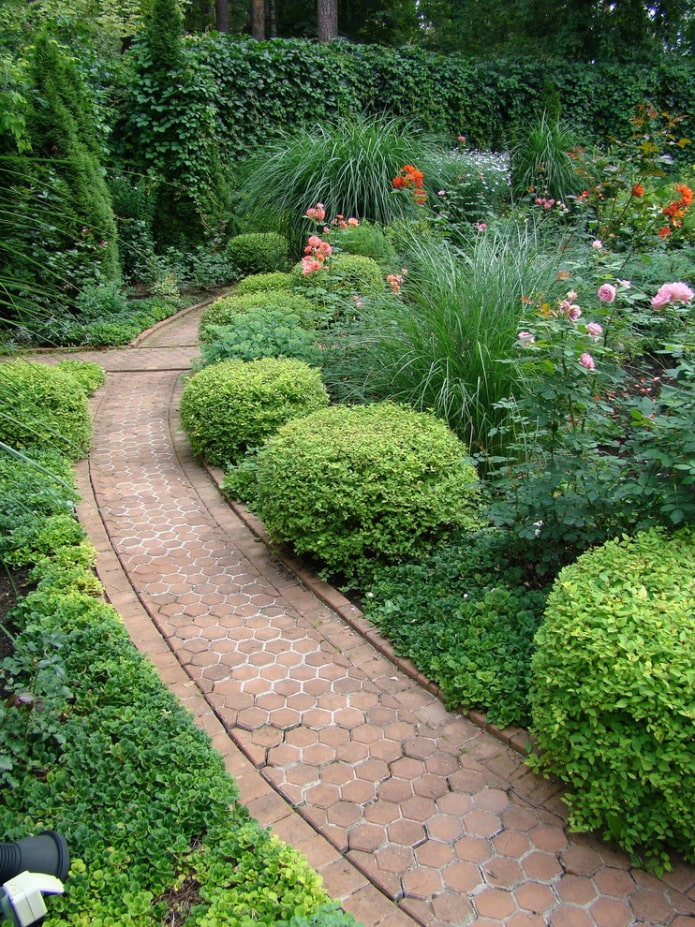

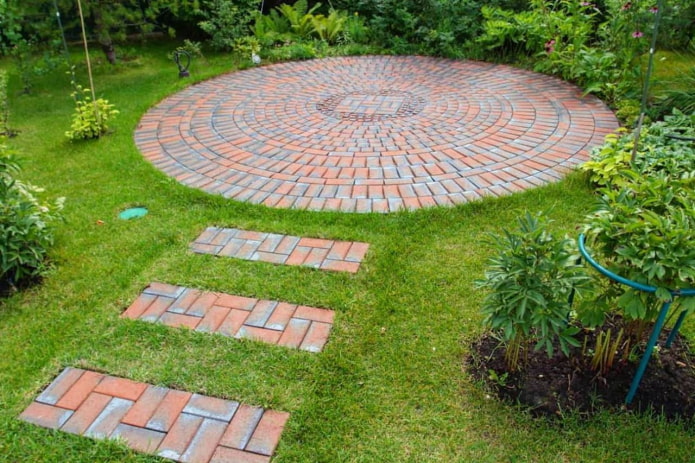

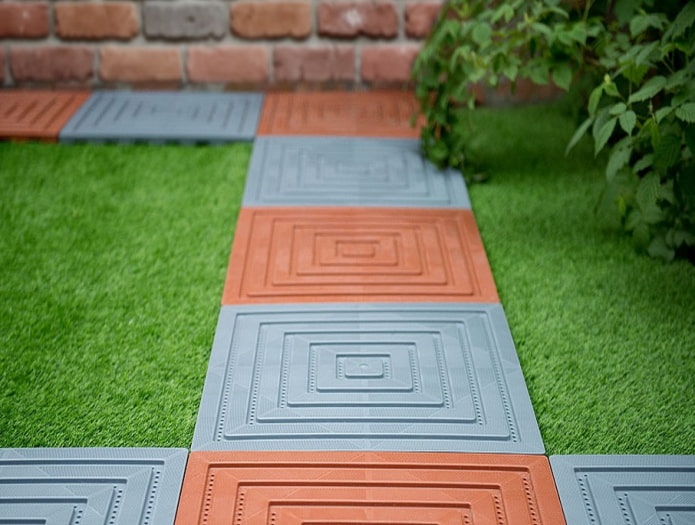
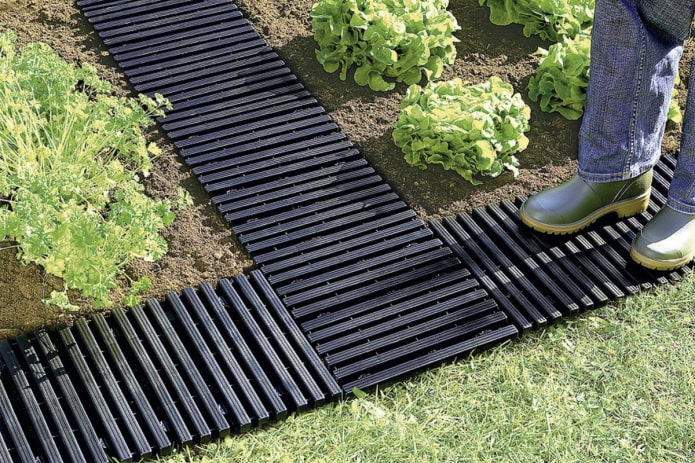
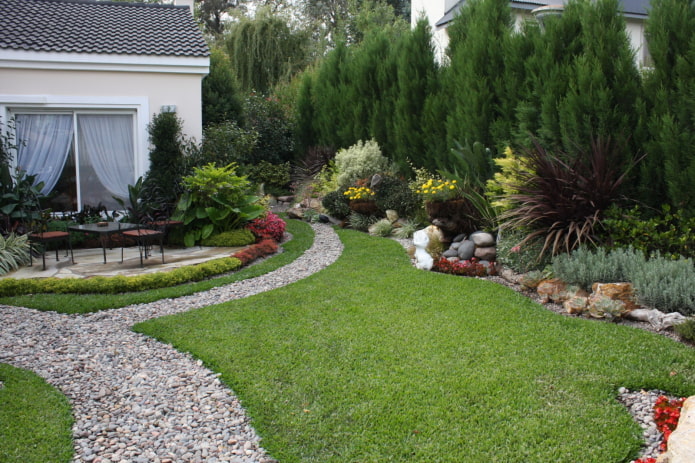
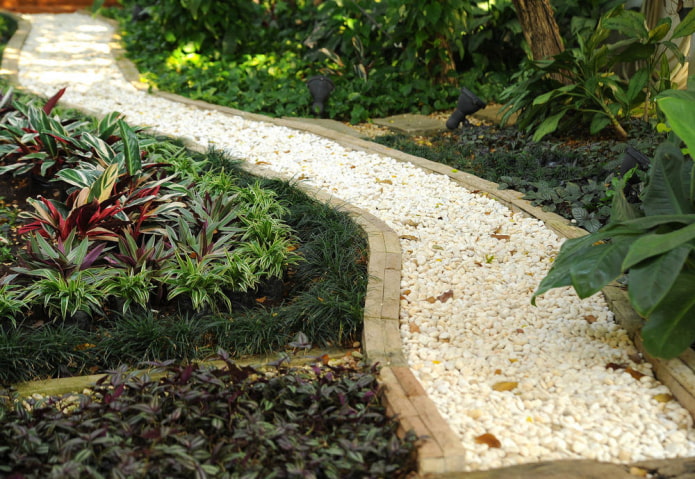

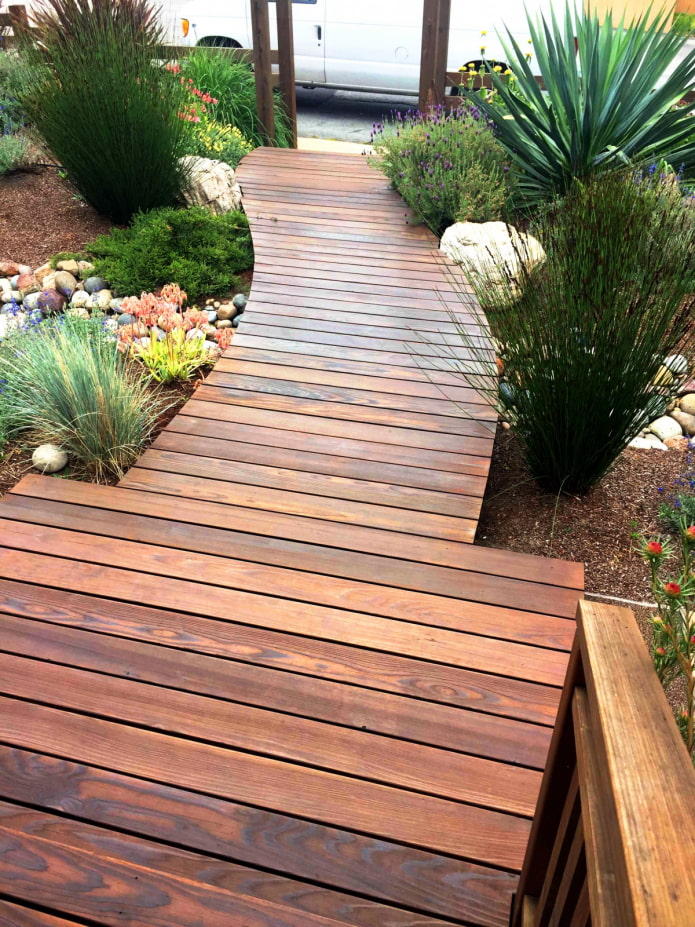

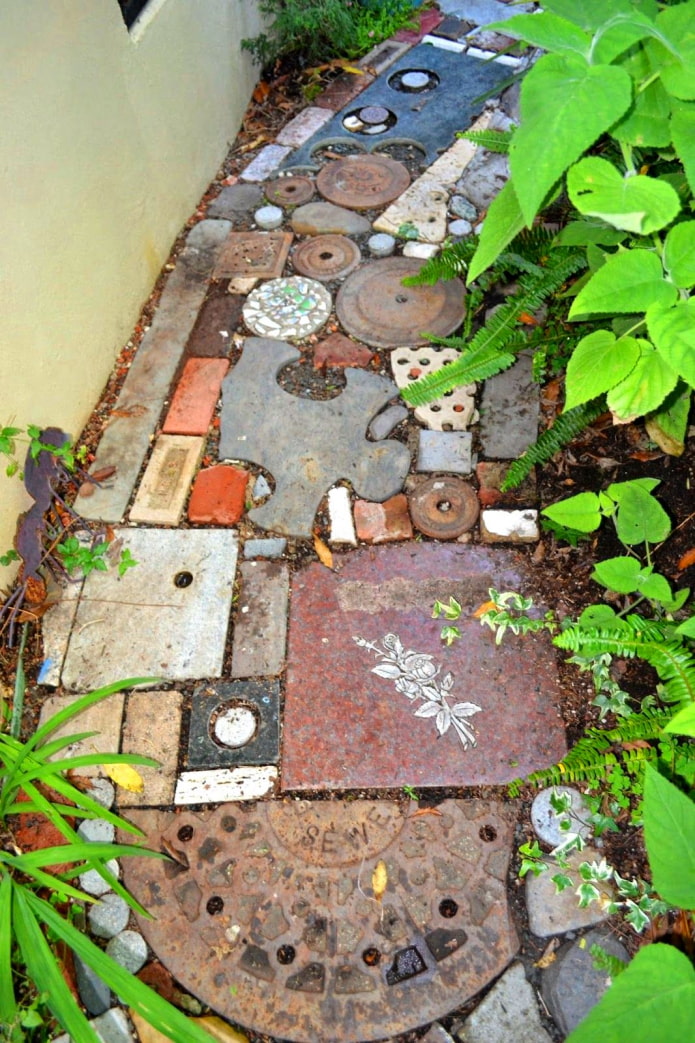
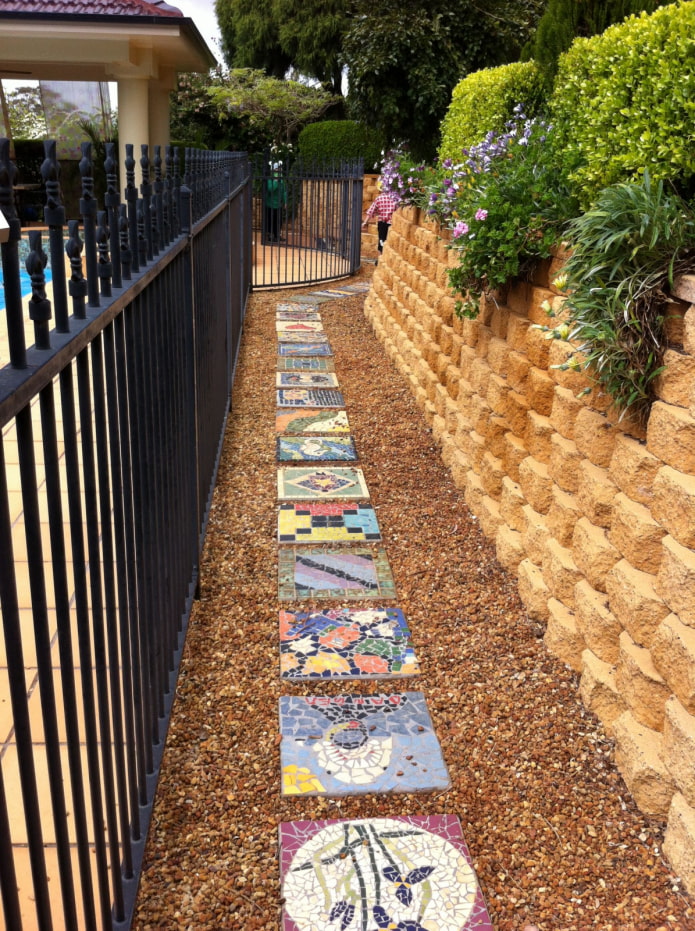
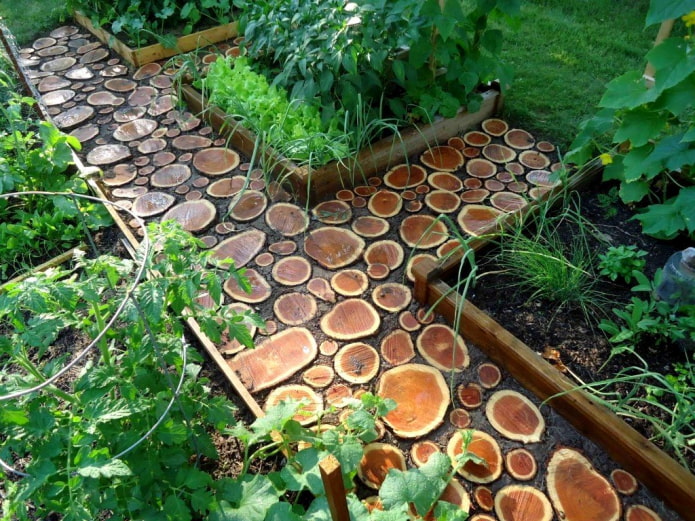
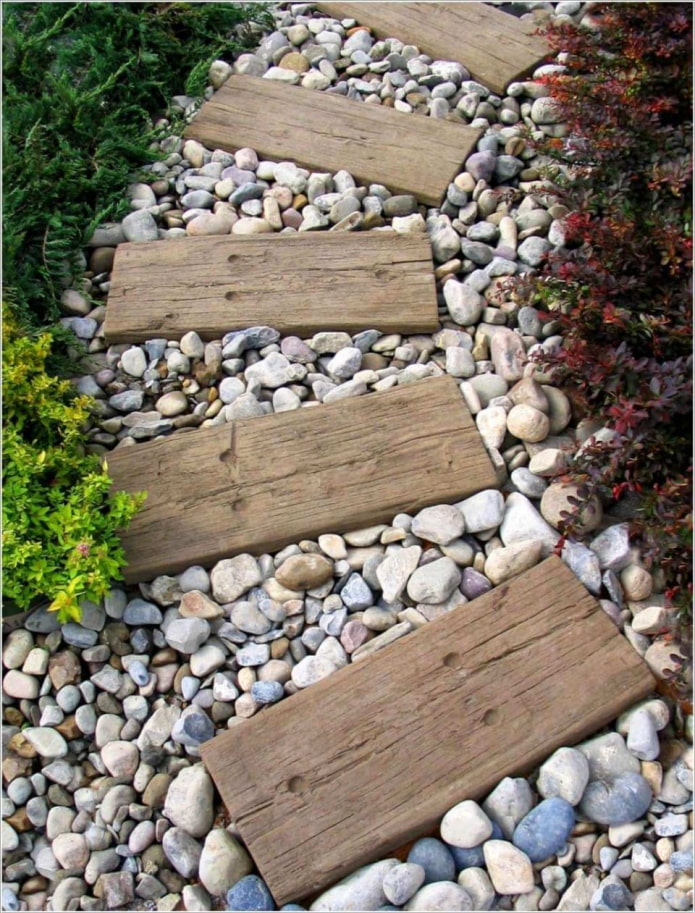
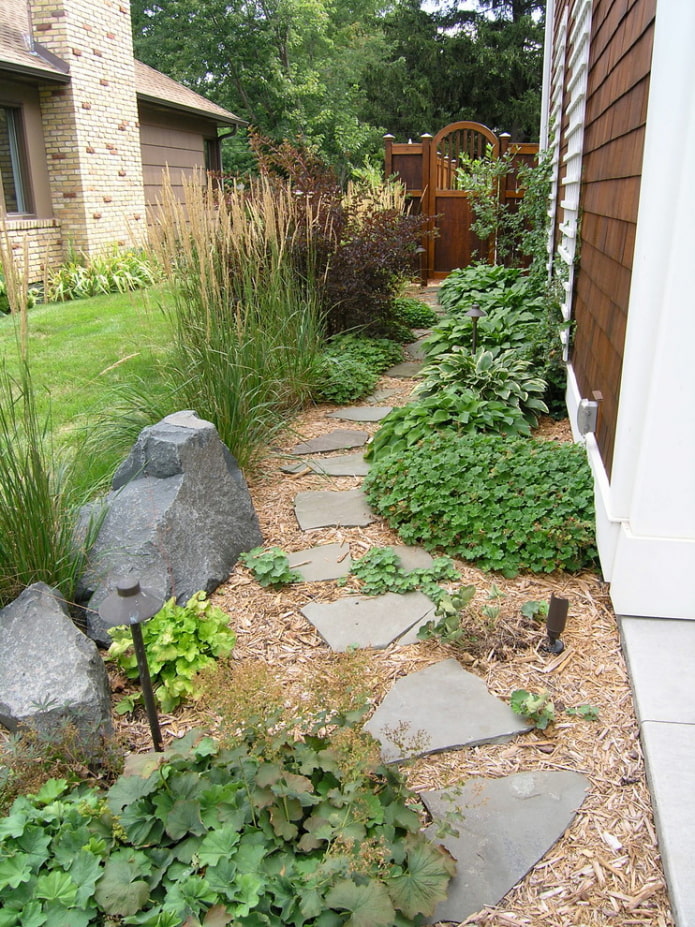

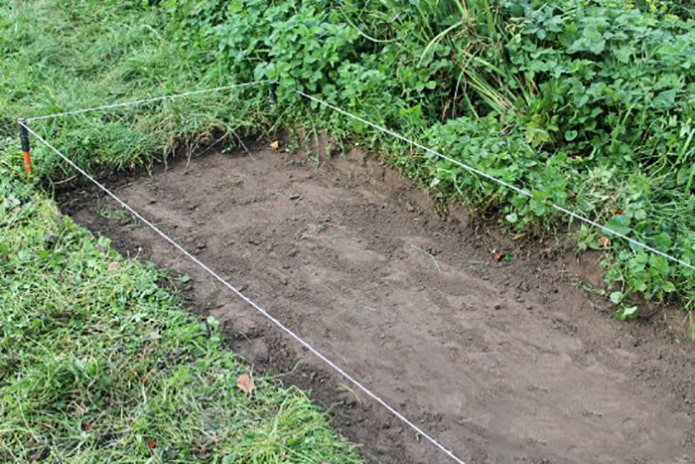
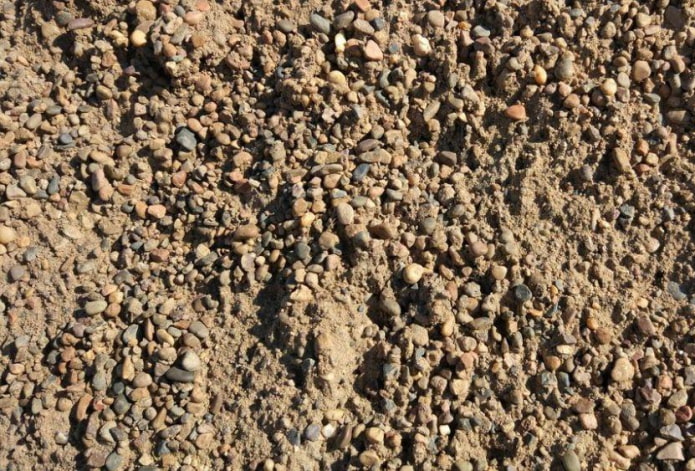
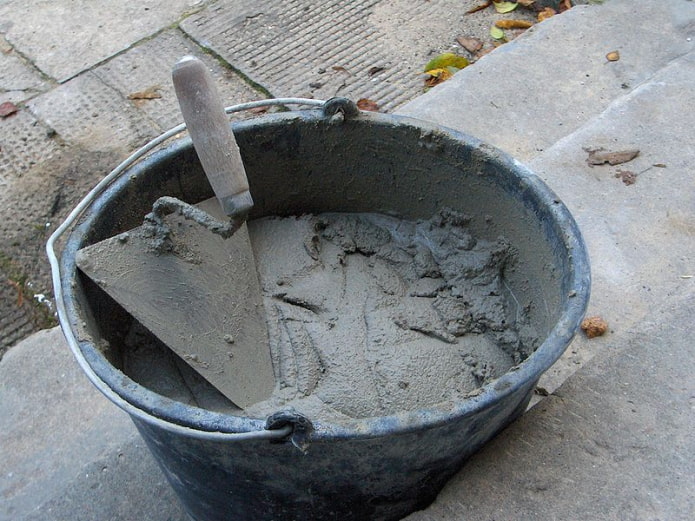
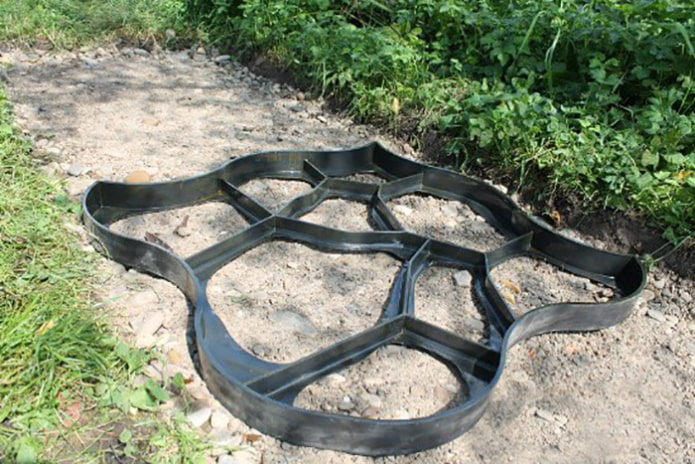
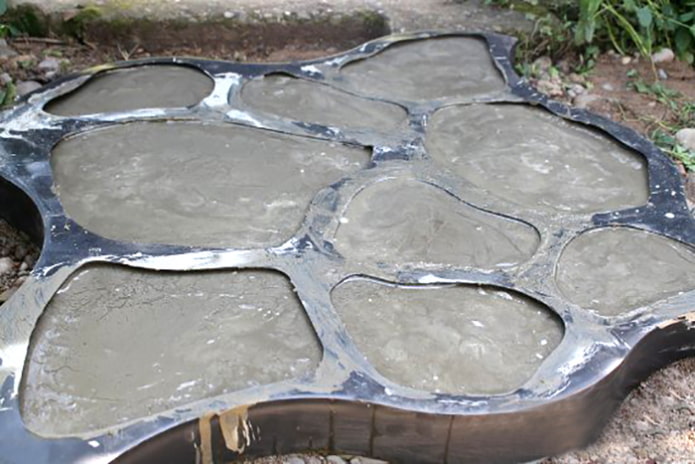

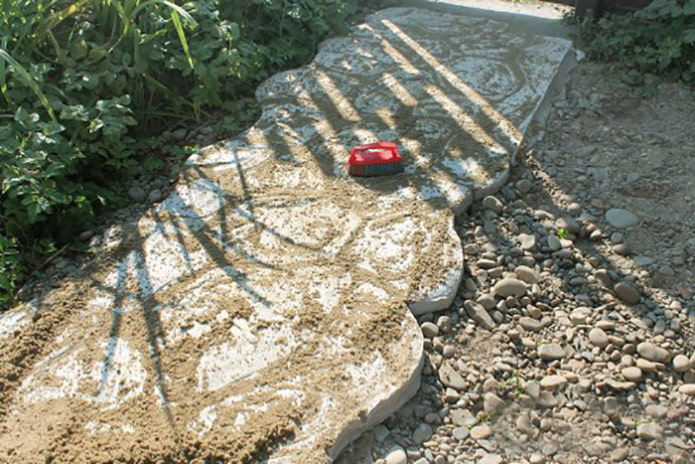
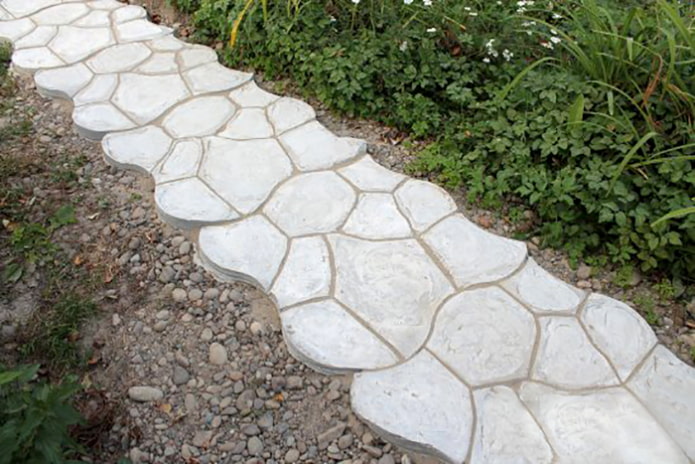
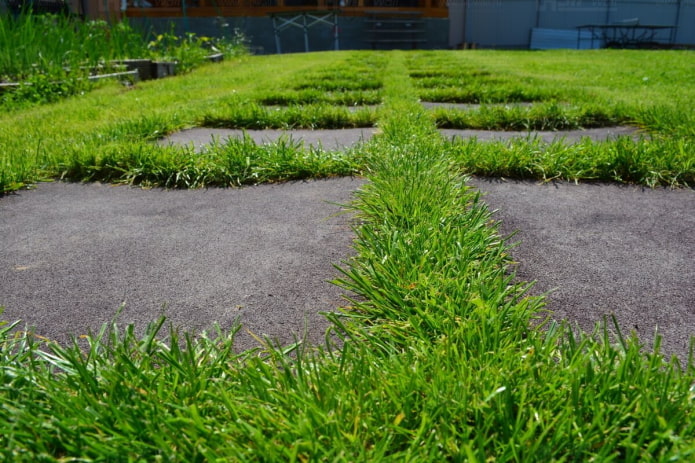
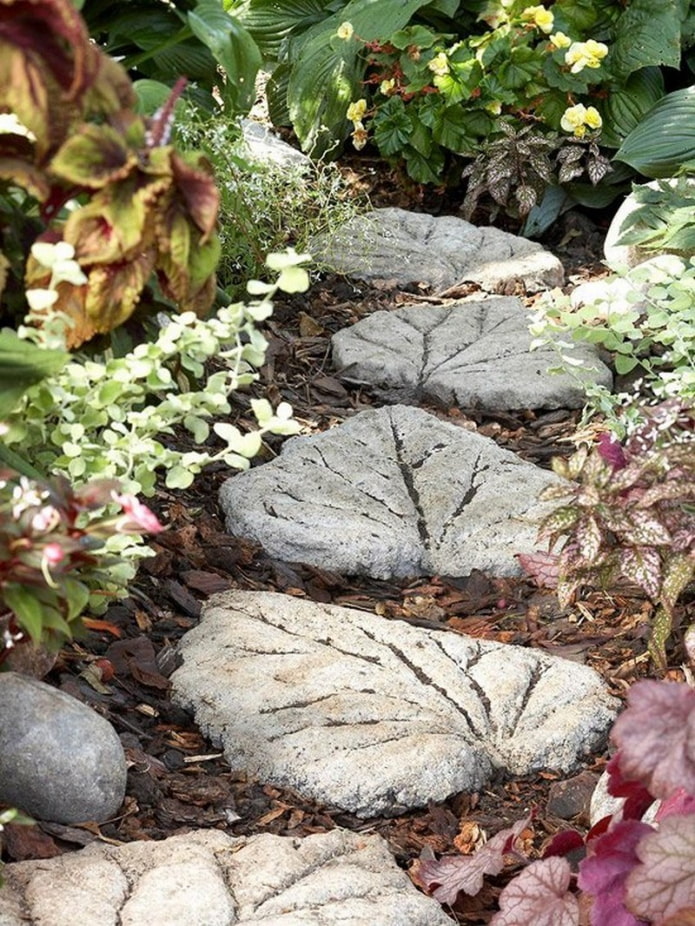
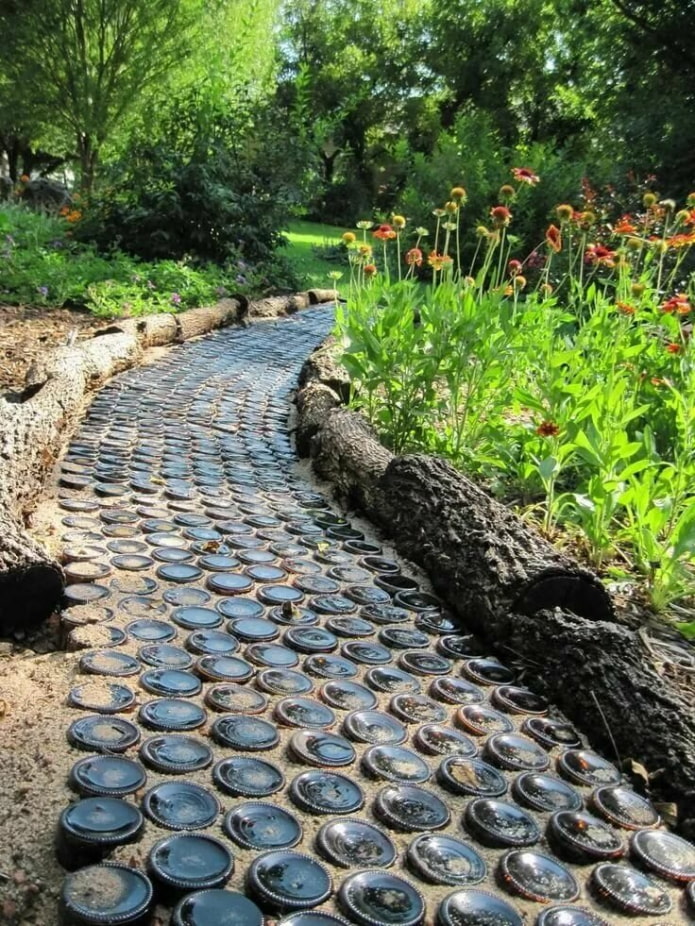
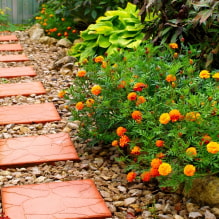
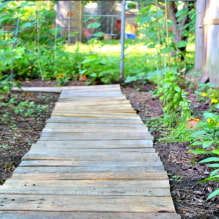
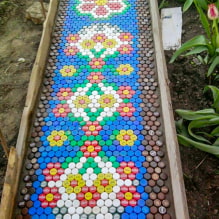
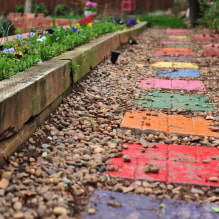
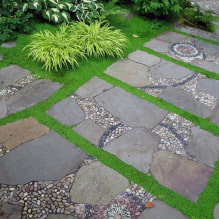
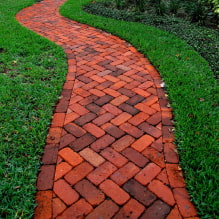
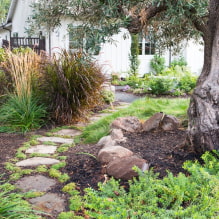
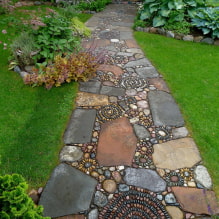

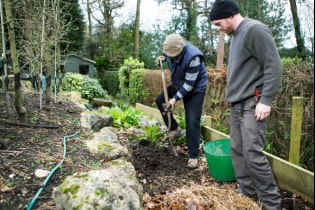 What fertilizers should be used in spring?
What fertilizers should be used in spring? How to use gabions on the site?
How to use gabions on the site?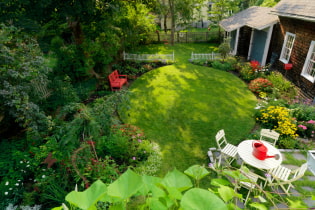 Landscaping of a summer cottage on 6 acres
Landscaping of a summer cottage on 6 acres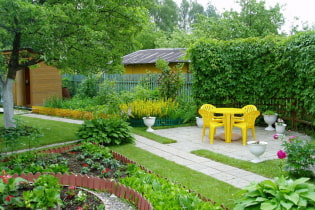 How to arrange the landscape design of a suburban area of 4 ares?
How to arrange the landscape design of a suburban area of 4 ares?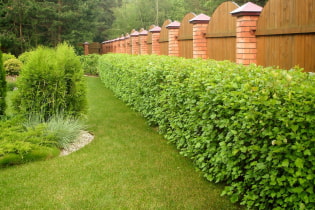 What plants can you make a hedge?
What plants can you make a hedge?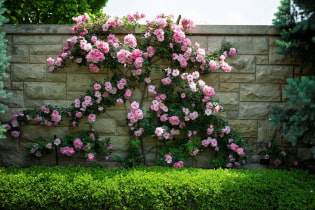 17 fast growing climbing plants to pick up
17 fast growing climbing plants to pick up